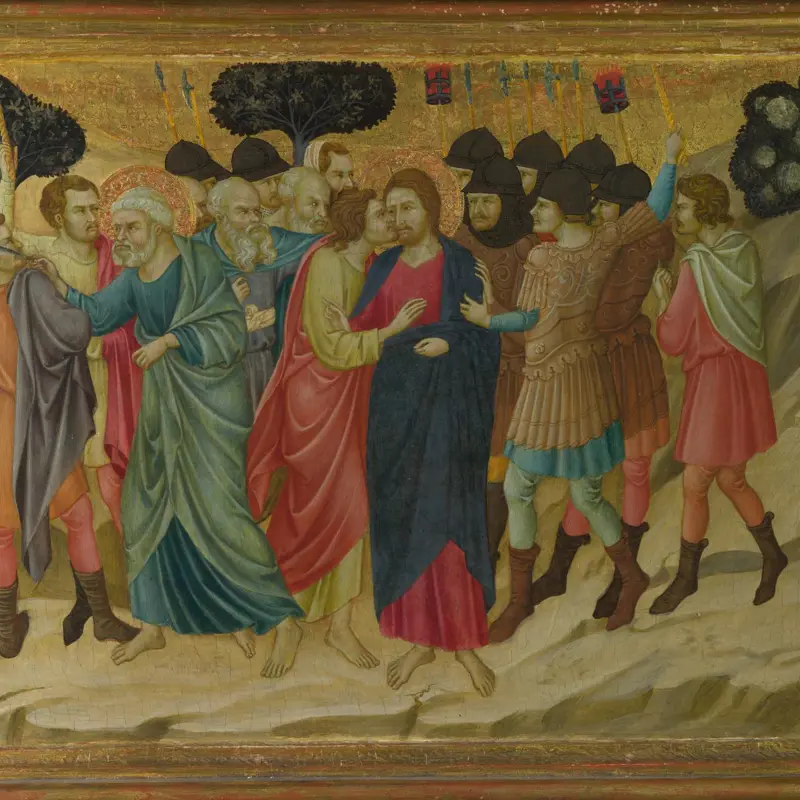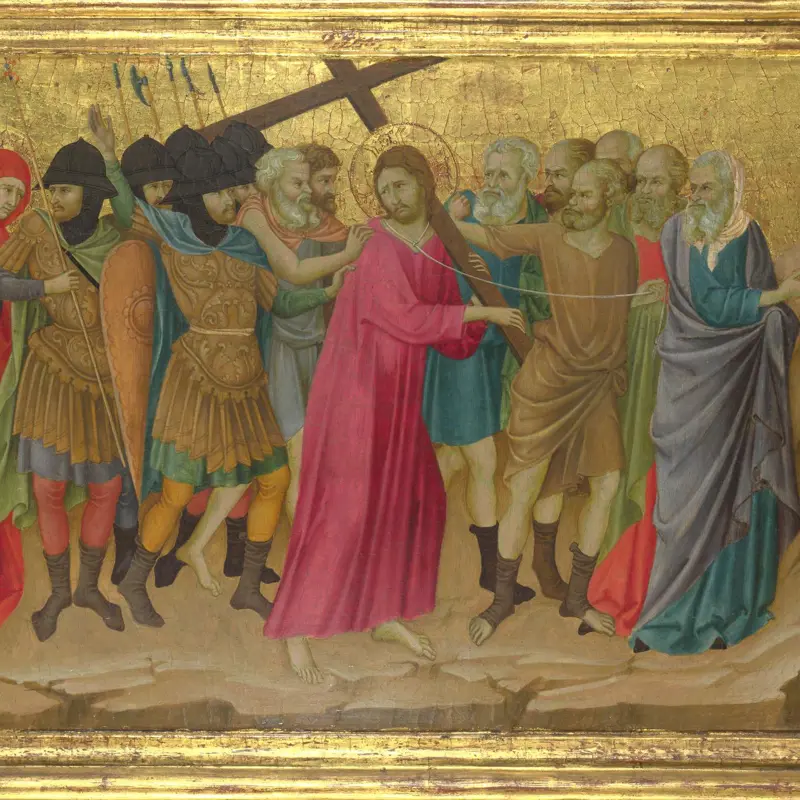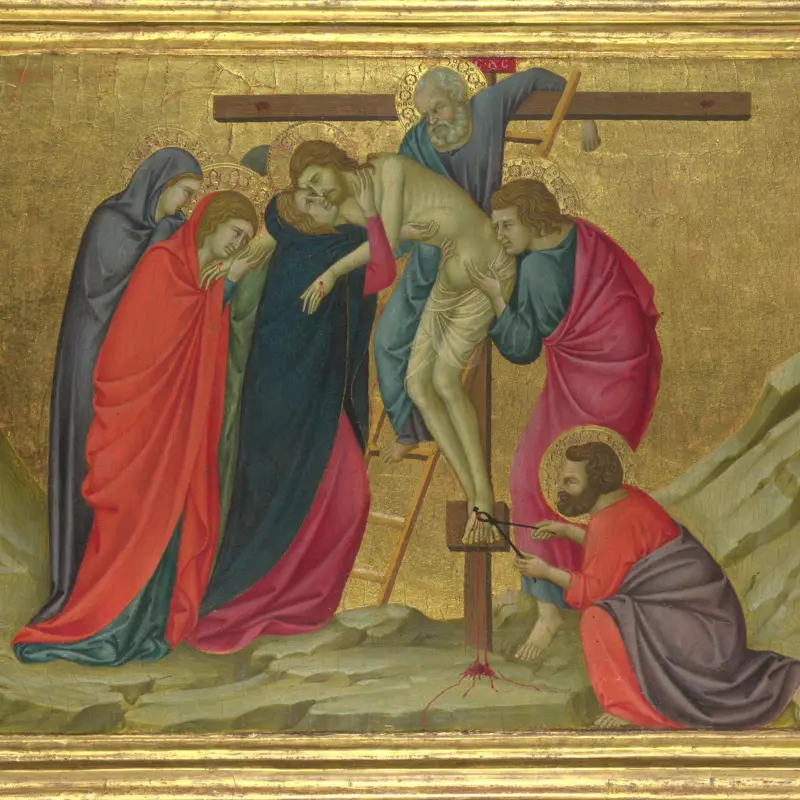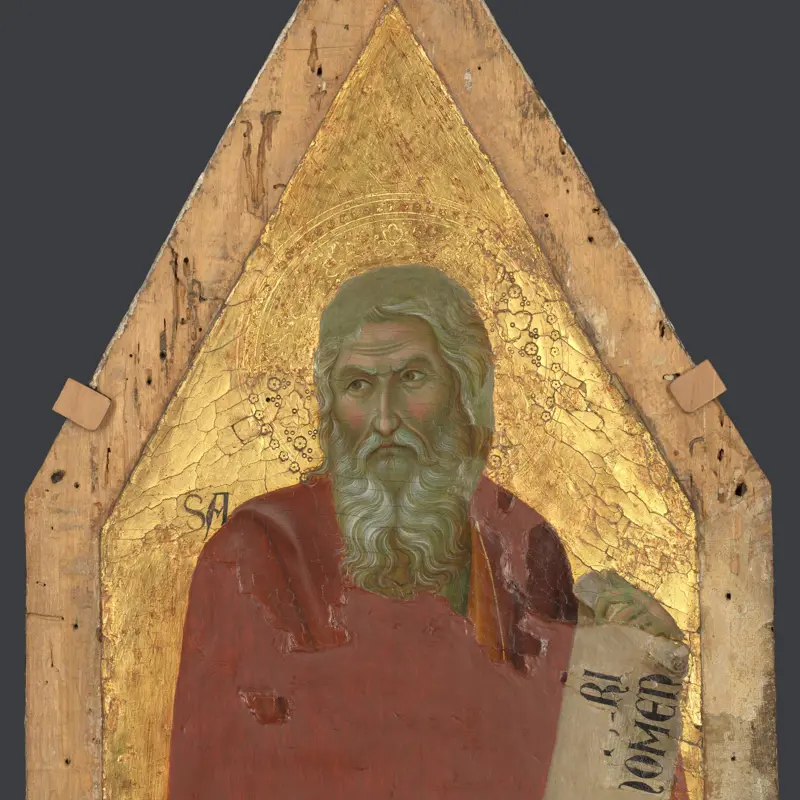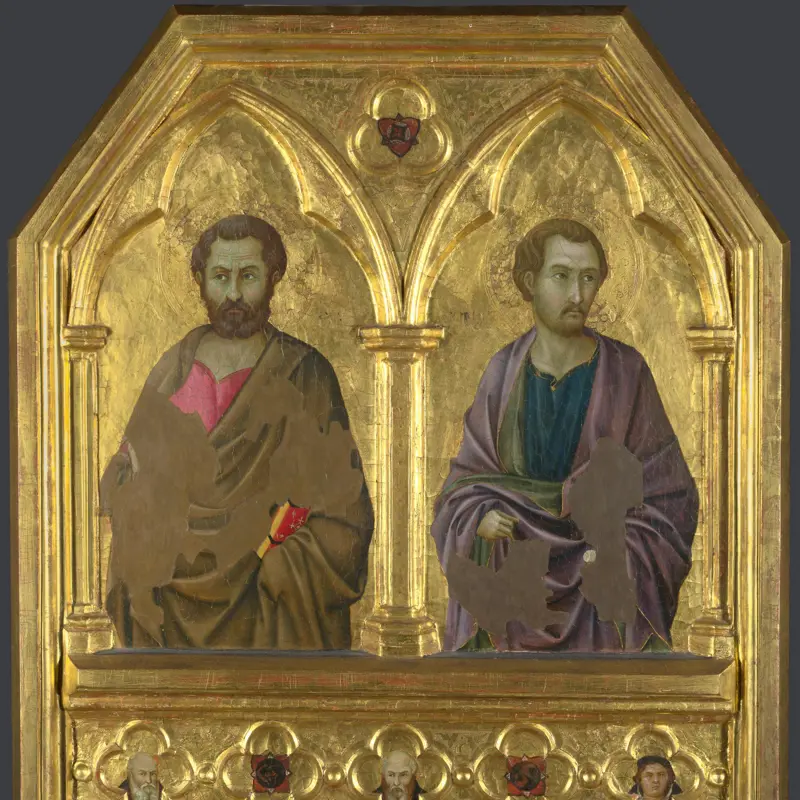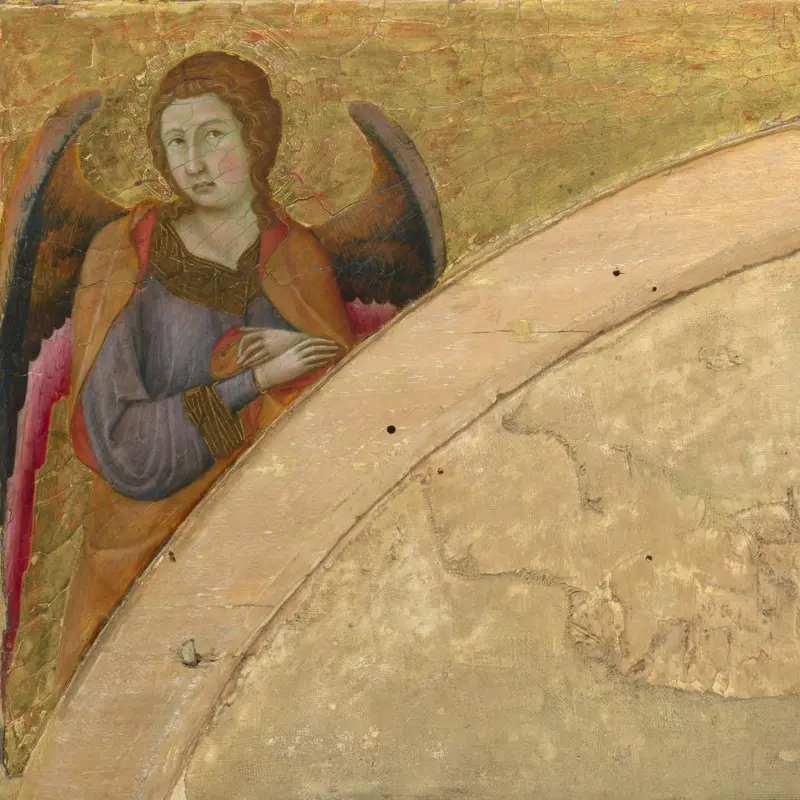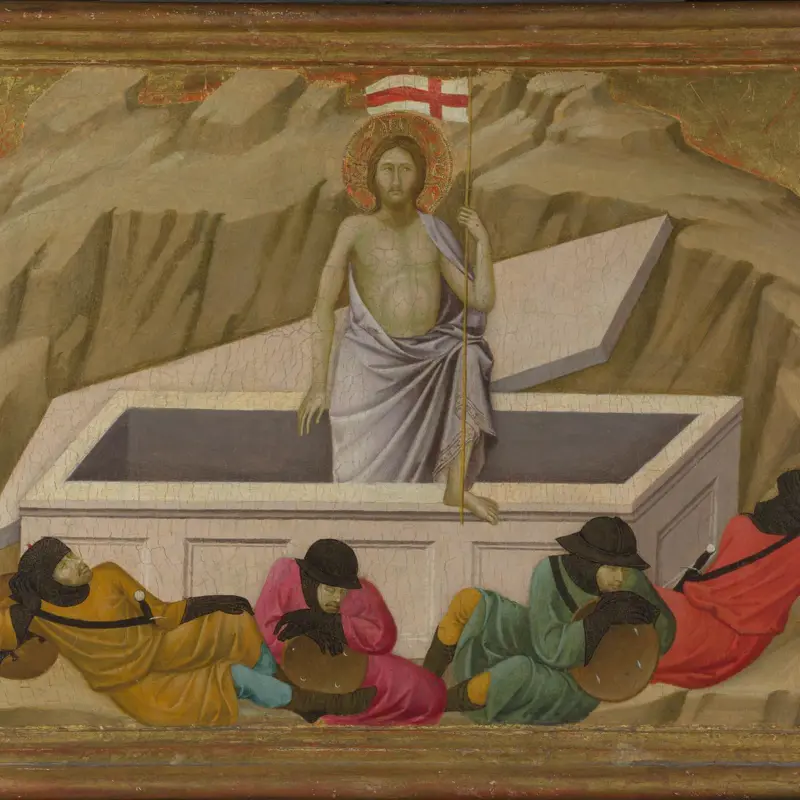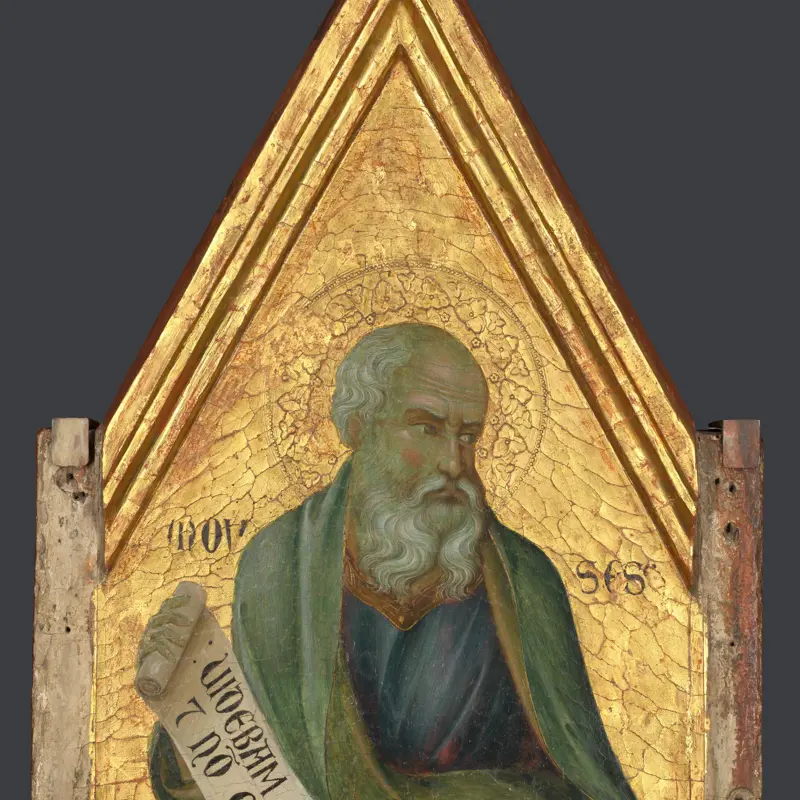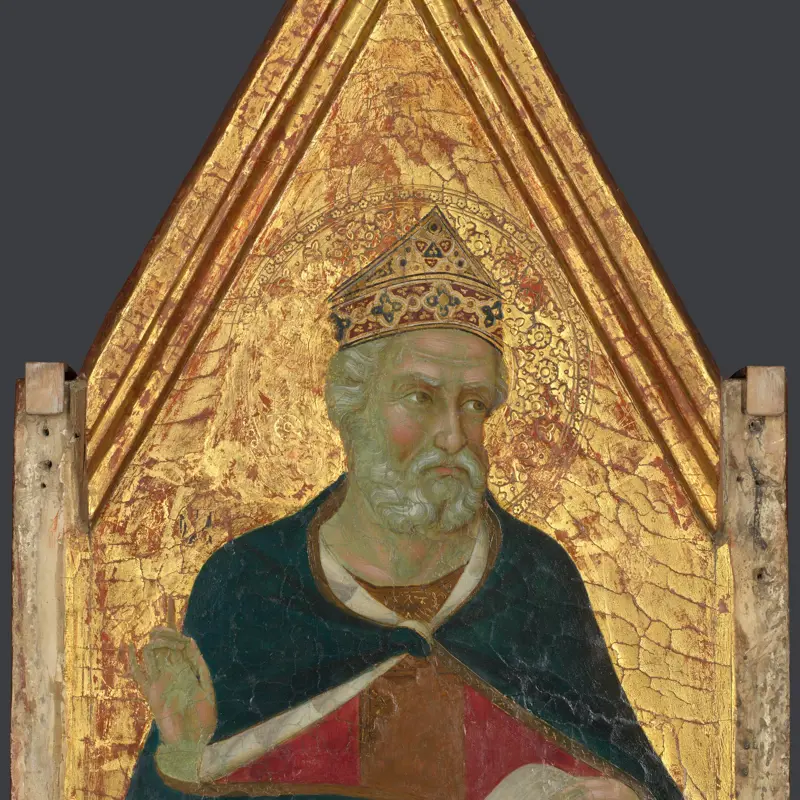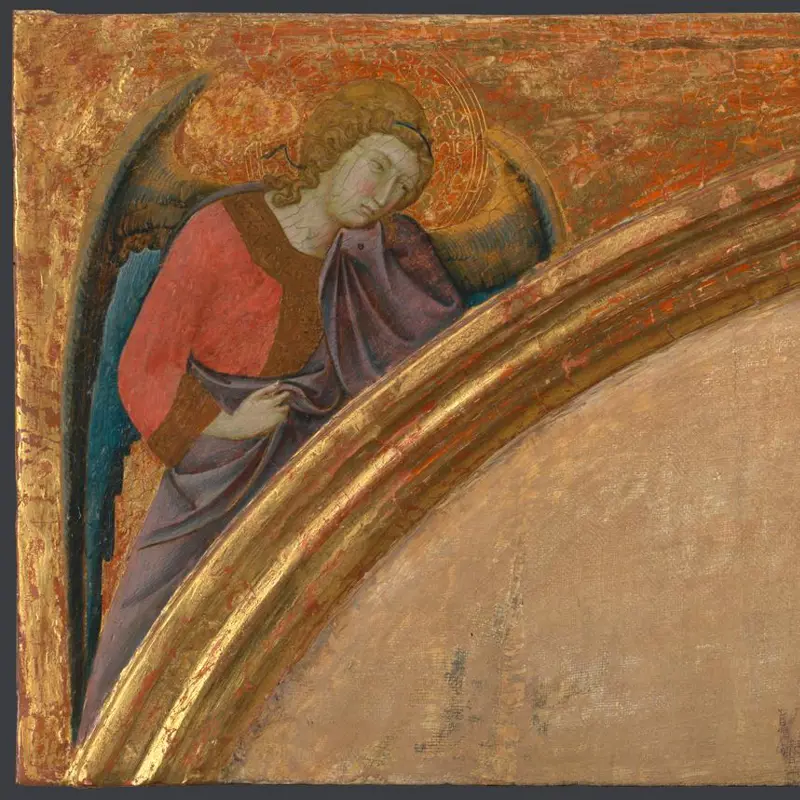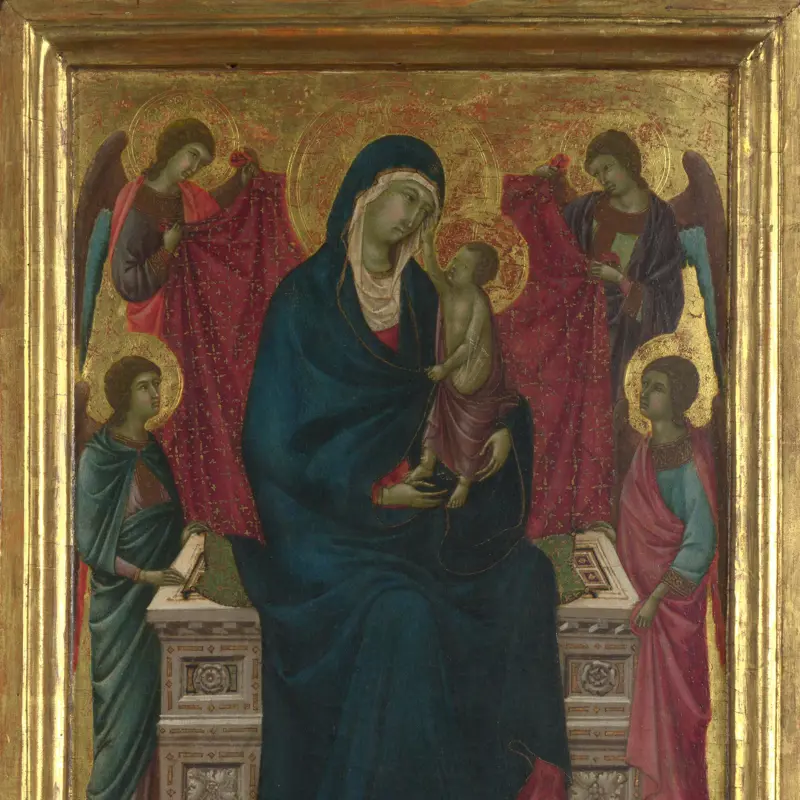Ugolino di Nerio, 'Moses', possibly 1325-8
About the work
Overview
This panel comes from the uppermost part of a large altarpiece painted for the high altar of the church of Santa Croce, Florence. There are two others in our collection, showing the prophet Isaiah and King David; all three figures carry scrolls with Latin inscriptions.
This one shows Moses who, according to the Old Testament book of Exodus, was chosen by God to lead the Israelites out of captivity in Egypt. The scroll he holds is inscribed with words adapted from the book of Exodus: ‘I saw that the bush was burning and was not consumed’ (Exodus 3: 2). The burning bush, through which God spoke to Moses, later came to be associated with the Virgin Mary’s everlasting virginity.
The inscription, which refers to the divine nature of Christ’s conception, is in keeping with those on the scrolls held by David and Isaiah, which also feature prophecies about Christ’s birth.
Key facts
Details
- Full title
- Moses
- Artist
- Ugolino di Nerio
- Artist dates
- Documented 1317-27; died possibly 1329
- Part of the series
- The Santa Croce Altarpiece
- Date made
- Possibly 1325-8
- Medium and support
- Egg tempera on wood (probably poplar)
- Dimensions
- 55 × 31.4 cm
- Acquisition credit
- Bought, 1983
- Inventory number
- NG6484
- Location
- Room 58
- Collection
- Main Collection
- Previous owners
- Frame
- 14th-century Sienese Frame (original frame)
Provenance
Additional information
Text extracted from the ‘Provenance’ section of the catalogue entry in Dillian Gordon, ‘National Gallery Catalogues: The Italian Paintings before 1400’, London 2011; for further information, see the full catalogue entry.
Bibliography
-
1985National Gallery, The National Gallery Report: January 1982 - December 1984, London 1985
-
1986Davies, Martin, National Gallery Catalogues: The Earlier Italian Schools, revised edn, London 1986
-
1988Gordon, Dillian, National Gallery Catalogues: The Early Italian Schools before 1400, revised edn, London 1988
-
2001
C. Baker and T. Henry, The National Gallery: Complete Illustrated Catalogue, London 2001
-
2011Gordon, Dillian, National Gallery Catalogues: The Italian Paintings before 1400, London 2011
About this record
If you know more about this work or have spotted an error, please contact us. Please note that exhibition histories are listed from 2009 onwards. Bibliographies may not be complete; more comprehensive information is available in the National Gallery Library.
Images
About the series: The Santa Croce Altarpiece
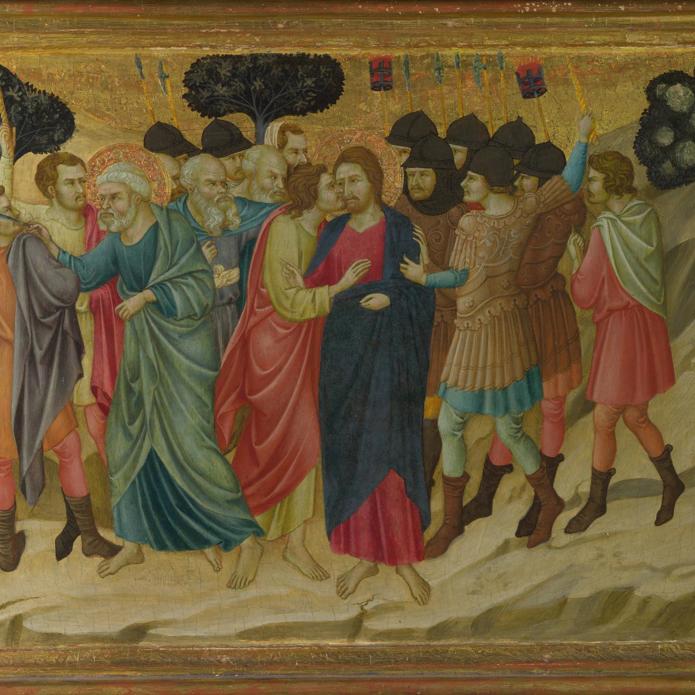
Overview
These panels were once part of a large altarpiece which adorned the high altar of the church of Santa Croce in Florence. It focused on the Passion of Christ (his torture and crucifixion) and the Resurrection – an appropriate theme, as the church was dedicated to the Holy Cross.
Drawings made in the late eighteenth century show how it was arranged originally. There were four tiers of images: the main tier had a central image of the Virgin and Child flanked by images of the saints within arches, which were decorated with angels (there are two sets of these in the National Gallery’s collection).
Above was a row of saints framed in pairs; we hold two pairs. The uppermost tier consisted of six pinnacle panels, three on either side of a central image which probably showed the Crucifixion, itself topped by an image of Christ making a blessing gesture. The predella (the lowest layer) consisted of seven scenes showing Christ’s suffering and death; we have four of these.

